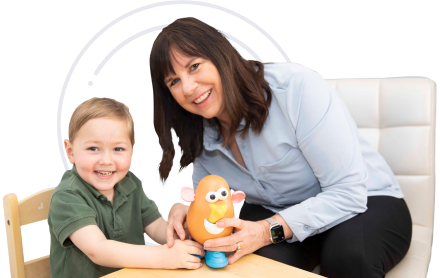Play Skills Development for Children with Autism
Dr. Mary Barbera
Play and Social Skills
Independent toy play is one goal, and the other goal we have is social play skills. I would work on both. You want him to keep himself entertained. What I find though, with a lot of kids with autism, if it’s not taught and monitored well the independent play skills development will often become independent stim time. Independent work activities can also become independent stim activities. Self-stimulatory activity often looks like your child or client flicking their fingers, rocking, or tapping a pen.
Want to Learn how to Increase Talking & Decrease Tantrums in Children with Autism or Toddlers Showing Signs?
Want to start making a difference for your child or clients?

Self-Stimulatory Behavior
Types of Play Skills Development
There is a good book called What you Need to Know About Motivation and Teaching Games by Steve Ward. I’ve had him on my podcast. Go Fish is a great game to play when working on play skills development, or a simple activity like Hot and Cold. Steve’s book has great suggestions to teach social skills through game play.
In the past, I’ve talked about little books that teach play skills development by having an activity on each page that show the child how to do each activity in order, flipping from one page to the next as they learn social skills through play.
The other thing you can do is get a plastic container with a few drawers, and make the first drawer the puzzle drawer, or some other game. Put everything they need for the puzzle in that drawer. Then, put other activities in the rest of the drawers. You could have specific times or days for each drawer. Now the child or client knows, “Oh, I’m supposed to do the vehicle puzzle at this time.” He goes over and gets the vehicle puzzle out of the drawer, sits down and does it. Then he cleans it up and puts it back. Now he’s ready to move onto the next activity.
Learn More About Play Skills Development
- Stop Waiting and Worrying About Autism: 3 Secrets to Turn Autism Around in any Toddler or Preschooler
- 3 Big Autism Mistakes Parents Make (and what to do instead)
- 3 Biggest Mistakes Autism Professionals Make With Intermediate Learners
Want to Learn how to Increase Talking & Decrease Tantrums in Children with Autism or Toddlers Showing Signs?
Want to start making a difference for your child or clients?
